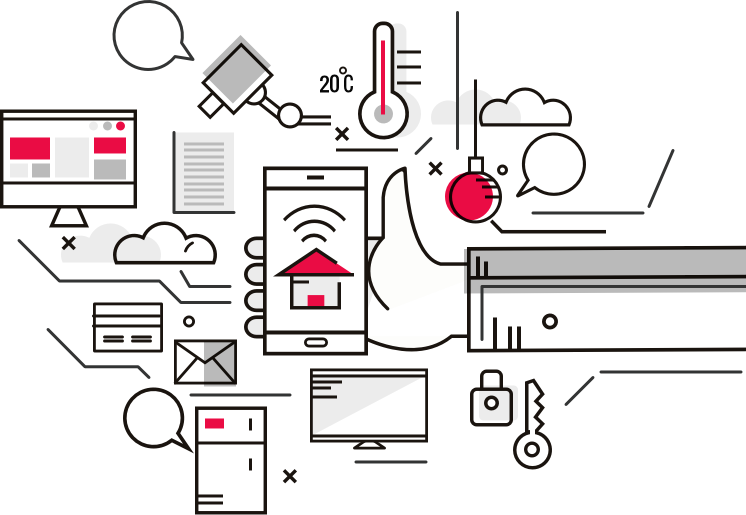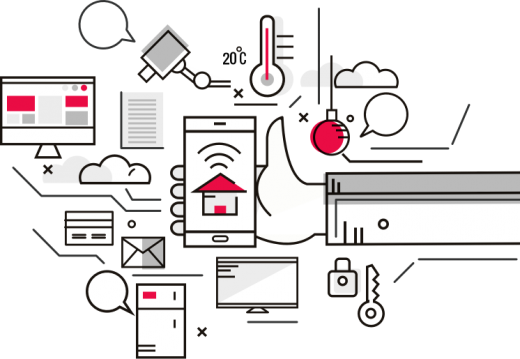Why Smart Homes are About to Get Real
Why Smart Homes are About to Get Real

The idea of a smart home that is more convenient, more energy-efficient, more entertaining and more secure isn’t new. Microsoft explained opportunities in the early 2000s — but today, people tend to have more than 10 connected devices operating in their homes.
Why Smart Homes are About to Get Real
The market for these solutions is fragmented with different connectivity protocols operating on different ecosystems, impeding innovation, development, and user adoption.
This is not the first time the consumer electronics industry has faced problems with fragmentation and its associated limits on growth.
In the 1990s, any time you tried to connect a new device to your computer required a driver installation, multiple reboots, and sometimes even a hardware change or two.
With the introduction of USB, computers needed only one type of port for easy access to most peripherals, and today there are billions of USB devices in the world.
Smart homes are about to get a similar solution in the form of standards and certifications to create interoperability.
Apple, Amazon, Google, NXP, and other leading names in technology and stakeholders from across the smart home industry, including semiconductors, systems, software, and consumer goods, are working to create ease-of-development for manufacturers and ease-of-use for consumers.
What will interoperability mean for consumers?
For starters, interoperability and certification will make it easier to select, install, and enjoy smart home products. The initial installation will be quick and hassle-free, and adding new components to the setup will be similarly easy.
There will no longer be a need to download and install different software components for each use case. There won’t be a need for extra (expensive) devices such as dedicated hubs, gateways, translators, and proxies, to connect silos.
The “Future-Proofer”
Smart homes will become future-proof because developers and service providers will have more flexibility and lower risk in delivering products. Existing home networks will be able to accept new devices more easily, and Smart homes will support the kind of plug-and-play interoperability that consumers have always wanted.

Cross-Industry Initiative
The cross-industry initiative, organized by the Zigbee Alliance under the working title “Project Connected Home over IP,” or “Project CHIP,” is focused on four broad areas to make the promise of smart homes real:
Internet Protocol (IP) as the basis for connectivity
Even though it’s been around since the mid-1970s, IP remains the principal protocol for relaying data across networks. IP addresses make a device “findable” on the network so that data can be sent to and from the device.
Also, IP routing moves data packets from one connection point to the next and is what essentially makes the present-day internet possible.
This will enable devices to communicate using one familiar, widely used protocol, without translation. Using IP will also make it easier to create consistent cloud and device data models, making device design and deployment both simpler and more cost-effective.
Internet Protocol (IP) will share standard device definitions
Project CHIP will define common, royalty-free, and open-source software standards for what a device is, with a definition of its attributes and standards for managing the complete device lifecycle, including provisioning, onboarding, removal, error recovery, and software updates.
Device designers will be able to choose the appropriate network protocol, thread or Wi-Fi, that best fits their applications, such as power consumption and data rate, without having to create translators.
The result will be a universal framework and model for device designers to follow, thereby delivering more innovation that’s simpler and easier for consumers to install and operate.
The Internet Protocol Platform will provide a comprehensive approach to security
In light of the robust growth of consumer use of home-based technology for work and play, a consistent and reliable approach to security is core to user reliance on smart home devices.
Security is one reason why IP is the foundation for Project CHIP, since IP includes market-proven algorithms and infrastructure that implement routing, switching, and firewalling in robust and resilient ways.
Also, IP supports opportunities to deliver end-to-end security and privacy when devices communicate with other devices, apps, or services.
Not only will the platform deliver these security benefits now, but the project’s working groups will continually examine ways to improve security further.
Internet Protocol will provide guidelines for certification
The project will define a common framework for connectivity, with support for network testing and certification, along with a set of test plans to be used with all major ecosystems. This will give device manufacturers and test labs clear guidelines to follow for certification.
The guidelines will make it easier for consumers to select devices and options because certified products can be trusted to work as expected in their given ecosystem.
The Promise of Project CHIP
The promise of Project CHIP is because of the decades-long history of leadership in connectivity and security, and there have always been strong advocates for standardization efforts across compute platforms, certification programs, and open-source initiatives.
Zigbee Alliance
As one of the few semiconductor companies involved in the project, Zigbee Alliance can help customers and developers realize the benefits of the new standards.
More importantly, Zigbee Alliance is excited to help bring those benefits to consumers.
I’m personally looking forward to seeing how smart devices will seamlessly interact, anticipate and automate every families’ needs in the home. The idea of a smart home is about to get real.
Image Credit: patryk kamenczak; pexels
The post Why Smart Homes are About to Get Real appeared first on ReadWrite.
(43)


